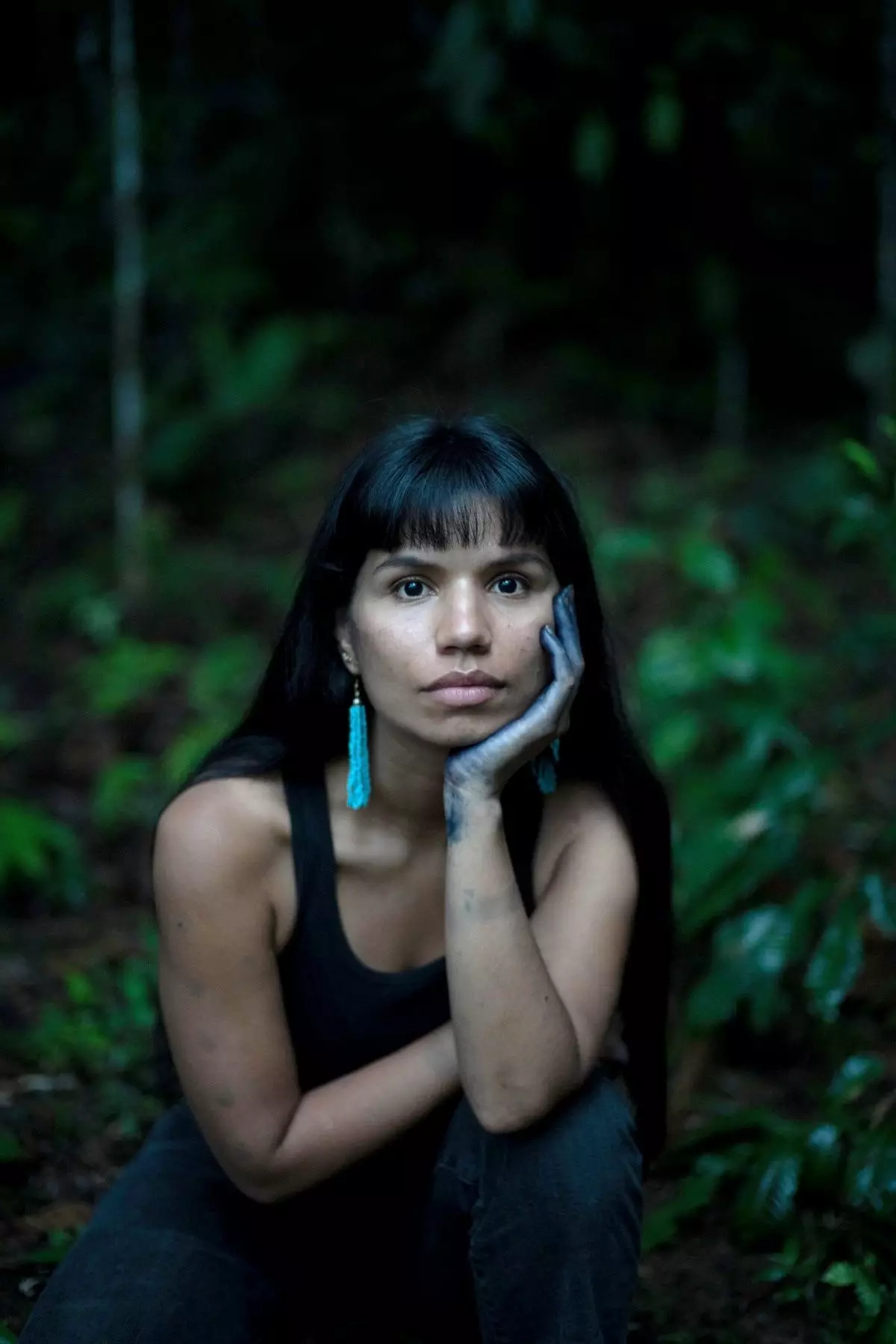
Pailon del Diablo, in Baños de Agua Santa, Ecuador.
Nina Gualinga She was aware, from a very young age, that in order to defend her people, the Kichwa of Sarayaku, and their territory, the Ecuadorian Amazon, from the oil companies and other exploitative agents, they had to organize. Thus, she joined the collective struggle of the collective Amazon Women , a movement in a constant struggle to keep alive an area that is seen threatened by extractivism, violence and climate change.
This interview is part of "The World Made Local", a global project of Condé Nast Traveler in the seven international editions, which gives voice to 100 people in 100 countries to discover why their own territory should be your next destination.
Tell us a little about your fight.
Well, this is something I've been involved with since I was very little. It is not something I chose but it was reality that forced me. Almost all of the Amazon is under threat of extractive industries such as oil industry, mining, lumber, even hydroelectric. These activities seriously affect the way of life of the indigenous communities that depend on the forest, the rivers and community life. I also work with indigenous women, because extractivism, although it affects the entire community, affects women in particular. But it is not only that, the reality is also that the world is at a time where we have to reduce our carbon emissions. just came out IPCC report and the figures are alarming, we have to leave fossil fuels underground and scientists and our yachaks (shamans) agree on that. I believe that tourism must be aware. It is important that we are aware of the impact of traveling and consuming. It is good to support local economies but also, as a society, we must change consumer habits and culture Quick.

The activist Nina Gualinga.
Where you live now?
Right now I'm living in Sweden, for study reasons and for life circumstances. Of course, it is the complete opposite of the Amazon, but here there are also beautiful landscapes and natural sites, mountains and lakes. I try to connect with the earth here, but I can't deny that I miss the Amazon jungle.
Ecuador is the country where you were born and raised. What are your main dishes?
It is an incredible country, diverse in landscapes, species and cultures. Has it all. There are parts of the Amazon rainforest that are virgin for hundreds of thousands of years, thanks to the protection of indigenous peoples –there are fourteen indigenous nationalities (and 18 peoples) each with different languages, customs and cultures–. In fact, the Ecuadorian jungle is one of the places with the greatest biological diversity. The Yasuni Park it's an example. We also have the andes mountains, that divide the jungle from the coast. It is the longest mountain range in the world: it runs 7,000 km .And then there are the volcanoes As the Cotopaxi, in Pichincha; the coast with its beautiful beaches in the Peaceful. And many places to do surf. Food is delicious. And of course we have the Galapagos Islands.
What else is there to visit in Ecuador?
My people, Sarayaku. It is a community on the banks of the Bobonaza river. There you enjoy nature and, at the same time, participate in caring for the environment and learn about indigenous rights. To get there you have to coordinate with the agency Papangu Tours. Other places that you cannot miss is the Cuyabeno lagoon reserve. When it is the water season, you can see the pink dolphins. And in the Andes, one of my favorite places is quilotoa lake, a crater of a volcano that is no longer active and has now filled with water. The colors of the lagoon are beautiful. And it's possible camping and kayaking. I don't know the coast that well, but for surfing and partying a lot of people go to little mountain If you are looking for something quieter, there is the Machalilla National Park . It's like a mini Galapagos!
Tell us about your documentary, The Return: what is it about and where was it filmed?
El Retorno is a documentary we made and shot in the deep jungle about the impact of the pandemic on an indigenous family in my community. The family goes into the jungle to isolate themselves until the pandemic ends and realizes everything the jungle can offer them: food, fruits, natural medicine... In the jungle, isolation means freedom.
